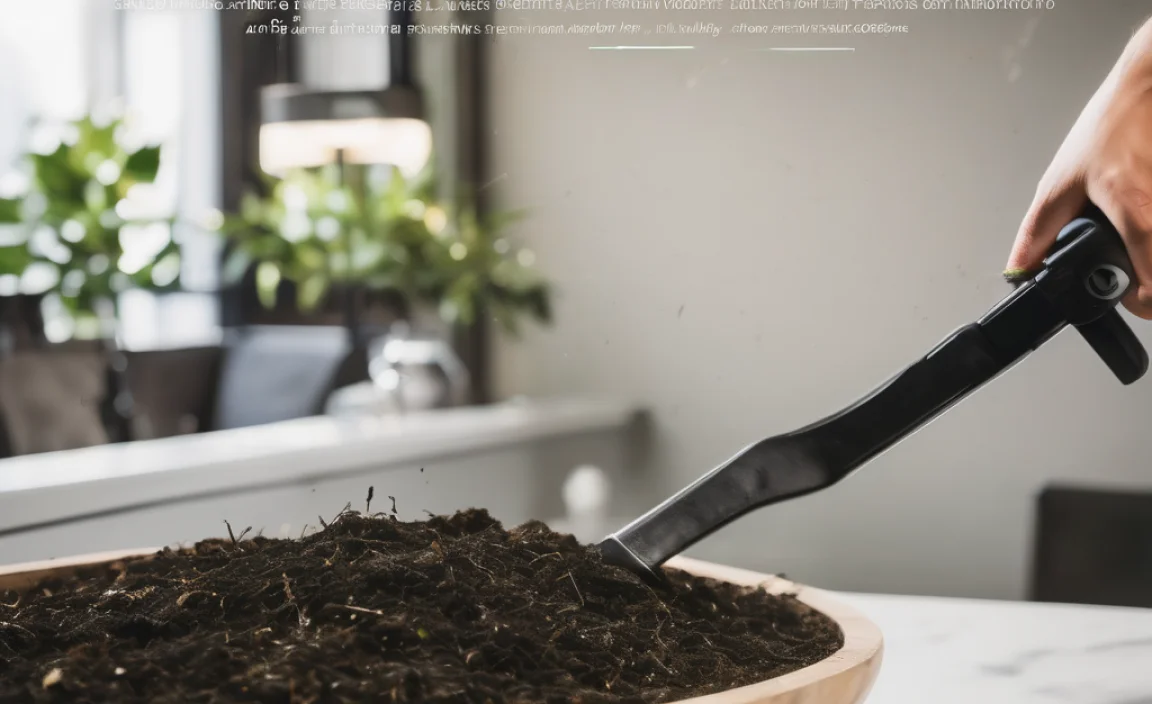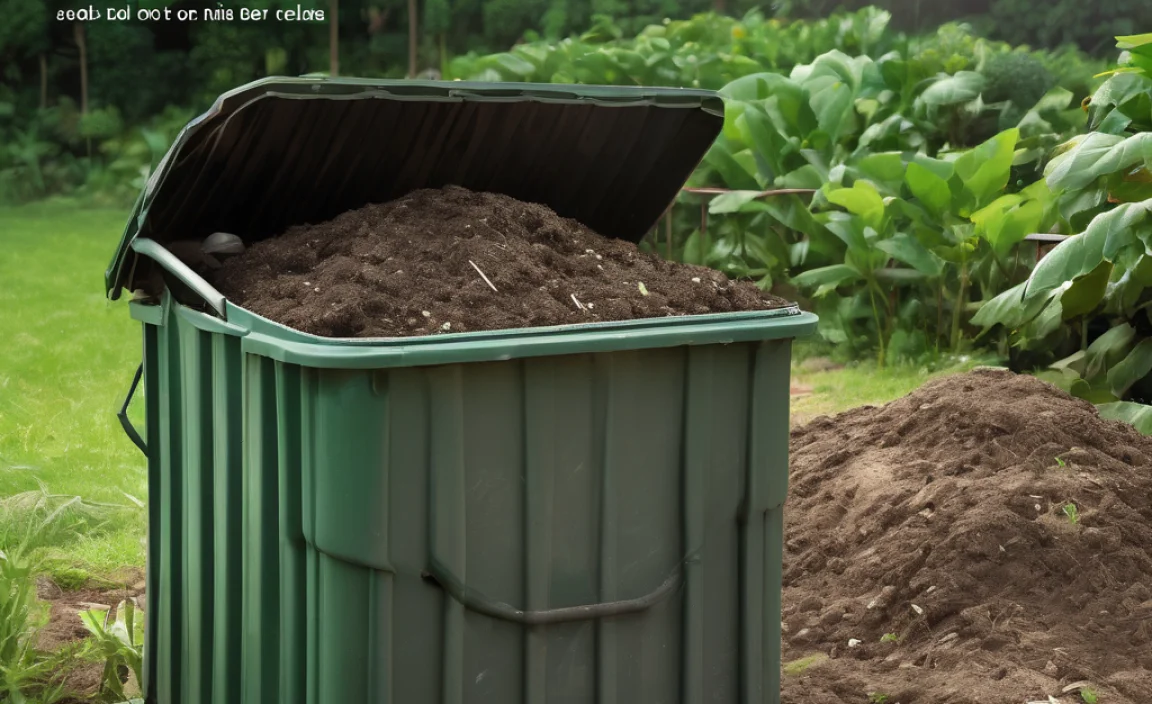Finding rats in your compost bin might seem daunting, but don’t worry! It’s a common garden issue, and with a few smart steps, you can reclaim your compost pile. We’ll walk through how to keep those unwelcome furry visitors out, so your compost can do its important work without interruption. Let’s get your compost back on track, safely and effectively!
Compost Soil Rats: Your Guide to Keeping Them Away
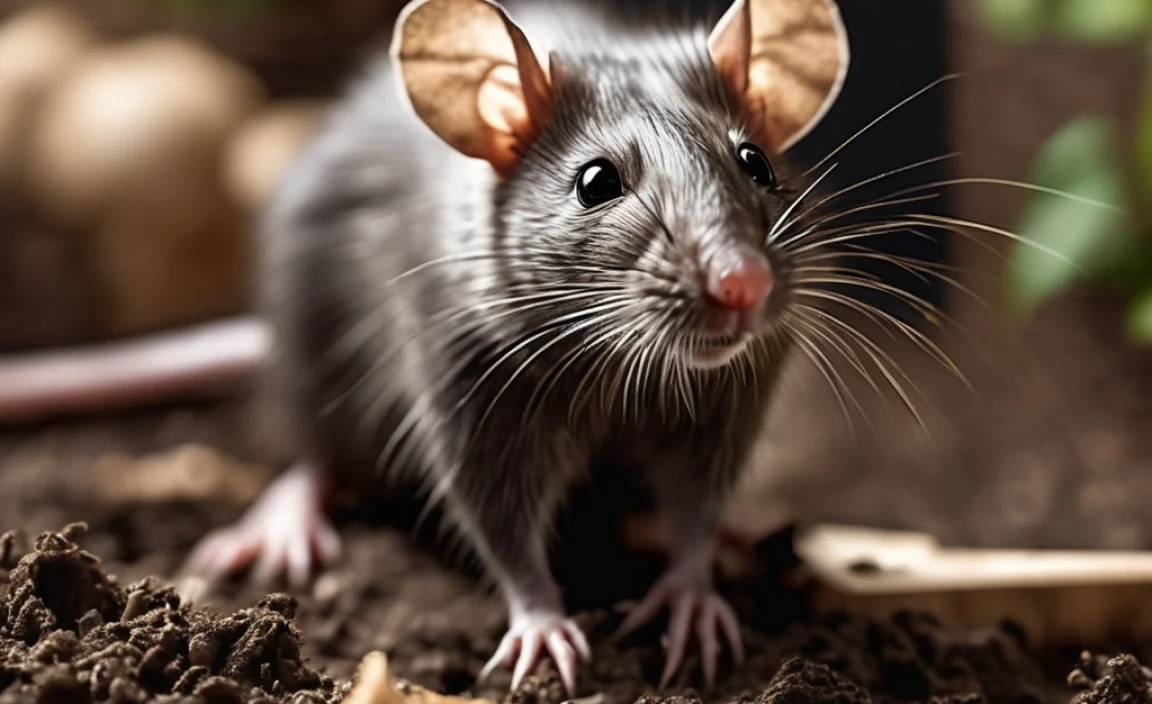
Hey there, from Troy at TopChooser! If you’re into gardening, you probably love composting. It’s a fantastic way to create nutrient-rich soil for your plants and reduce waste. But sometimes, our compost piles can become an all-you-can-eat buffet for unwanted guests, especially rats. Seeing “compost soil rats” scurrying around can be a real bummer, and frankly, a little creepy. But don’t let it discourage you! With some practical tips and a few easy changes, you can make your compost bin less appealing to them and protect your garden’s progress. We’ll cover everything from choosing the right bin to simple deterrents, making sure you can compost with confidence.
Why Do Rats Love Compost Bins?
Rats are opportunistic little critters, and a compost bin offers them a smorgasbord of delights. Think about what goes into a compost pile: food scraps, vegetable peels, fruit cores, and sometimes even kitchen waste or garden clippings. These items are exactly what rats look for – a readily available, often easily accessible food source. Beyond that, the warmth and shelter a compost bin can provide, especially during colder months, make it an attractive home. The mix of materials can create cozy nesting spots, hidden away from predators.
Here’s a quick rundown of what draws them in:
- Abundant Food Source: Leftover food scraps are a rat’s dream meal.
- Warmth and Shelter: Compost piles can offer a comfortable nesting environment.
- Easy Access: Open or poorly constructed bins are an invitation.
- Moisture: Damp materials can create ideal living conditions.
Identifying a Rat Problem
Before you can tackle a rat issue, you need to know if you actually have one. Rats are usually nocturnal, meaning they are most active at night, which can make spotting them tricky. However, there are tell-tale signs:
- Droppings: Rat droppings are about ½ to ¾ inch long, pointed at both ends, and dark brown or black. You’ll often find them near food sources, along walls, or on surfaces where rats travel.
- Gnaw Marks: Rats have continuously growing teeth, so they’ll gnaw on things like plastic bins, wooden structures, or even garden hoses to keep their teeth in check.
- Tracks and Smear Marks: In dusty areas, you might see footprints. Along walls or edges, you might notice greasy smear marks from their bodies brushing against surfaces.
- Scratching or Rustling Noises: Especially at night, you might hear subtle scratching or rustling sounds coming from your compost bin or nearby structures.
- Actual Sightings: Of course, if you see a rat, you know there’s a problem!
Essential Strategies for Compost Bin Rat Control
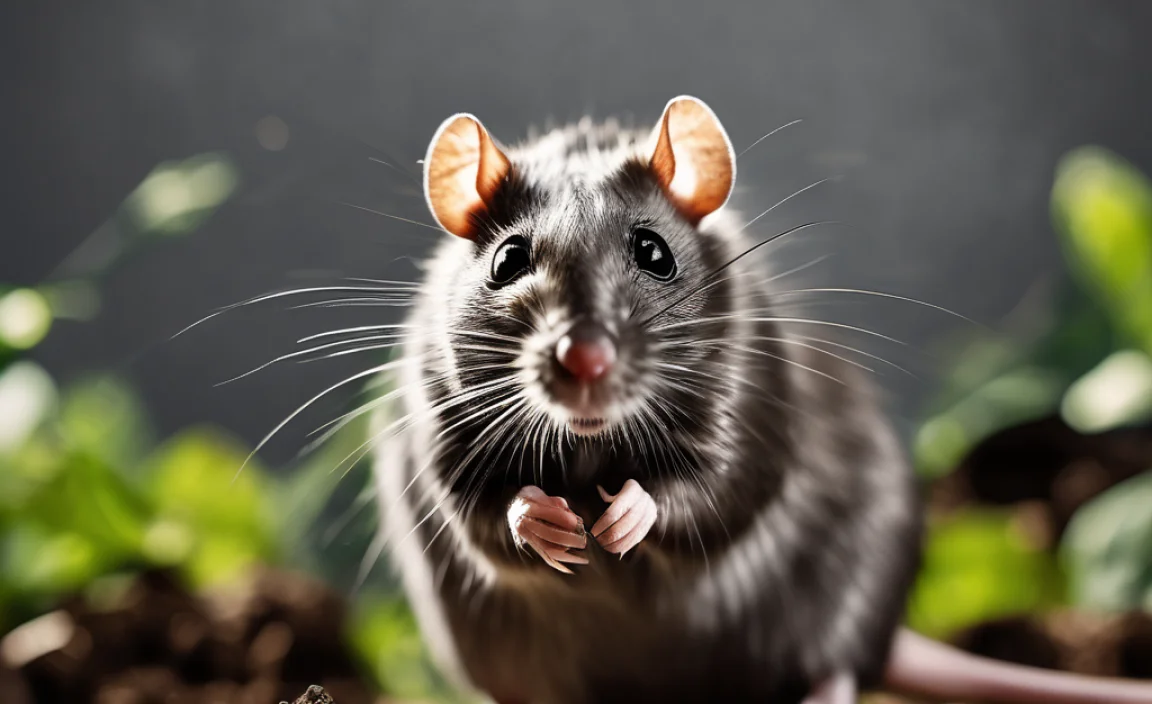
Dealing with “compost soil rats” is all about making your compost bin less inviting and more secure. It’s not about setting traps and forgetting it; it’s about smart prevention and management. Here are tried-and-true strategies to keep your compost pile rat-free, so you can enjoy the benefits without the pests.
1. Choose the Right Compost Bin
The type of compost bin you use is your first line of defense. Some bins are more rodent-resistant than others. For serious rat problems, or if you live in an area where rats are common, investing in a sturdy, enclosed bin is a wise move.
Types of Compost Bins and Rodent Resistance:
Open-air compost piles are the most vulnerable. Simple wooden or wire-mesh bins can also be easy targets if the mesh openings are too large or the wood is damaged.
Recommended for Rat Control:
- Tumbler Composters: These are sealed units that you rotate to mix the compost. They offer excellent protection because they are fully enclosed, often made of durable plastic, and usually have small openings that rats can’t access.
- Rodent-Proof Bins: Many commercially available compost bins are designed with rodent-resistant features. Look for bins made of thick plastic or metal with secure lids and solid sides. Sometimes these bins have a finer mesh at the bottom, or they sit on solid bases.
- DIY Bins with Modifications: If you have a DIY bin, you can reinforce it. Add a lid and use hardware cloth (metal mesh with small openings, typically ¼ inch or ½ inch) to cover any gaps or to create a base.
When choosing, consider:
- Material: Thick plastic or metal is harder for rats to chew through than wood or thin wire.
- Lid: A secure, locking lid is crucial to prevent access from above.
- Base: A solid base or a base covered with fine hardware cloth prevents burrowing from underneath.
- Openings: Ensure there are no large gaps or holes rats can squeeze through.
2. What NOT to Put in Your Compost Bin
This is a big one! While composting is about recycling organic waste, some items are just too tempting for rats and should be avoided if you want to keep them away.
High-Risk Items (Avoid If Possible):
- Meat, Bones, and Dairy Products: These are rich in fat and protein, which are highly attractive to rats. Their strong smell can also draw pests from afar.
- Oily Foods: Greasy foods, even in small amounts, are a magnet for rodents.
- Cooked Foods: While some people compost cooked food, it’s often more appealing and easier for rats to digest and process than raw materials.
- Pet Waste: Especially from dogs and cats, this can contain pathogens and is a strong attractant for rats and other scavengers.
Safer Alternatives (and how to manage them):
- Fruit and Vegetable Scraps: Generally safe, as long as they aren’t rotting excessively before being added.
- Yard Waste: Leaves, grass clippings, and small twigs are excellent compost materials and less appealing to rats.
- Coffee Grounds and Tea Bags: Good additions that rats tend to ignore.
- Eggshells: Crushed eggshells are a good calcium source and don’t attract rats.
If you must compost some of the higher-risk items (like small amounts of cooked vegetable scraps without grease), ensure your bin is very secure and compost frequently to break them down quickly.
3. Proper Composting Techniques
The way you manage your compost pile itself can make a difference. A well-maintained pile is less likely to attract pests.
- Bury Food Scraps: Always bury fresh food scraps deep within the pile, covering them completely with “brown” materials (like dry leaves, shredded paper, or sawdust). This helps mask the smell and makes them harder for rats to find.
- Maintain the Right Balance: A good compost pile needs a balance of “greens” (nitrogen-rich, like food scraps and grass clippings) and “browns” (carbon-rich, like dry leaves, shredded cardboard, or twigs). Aim for roughly a 2:1 or 3:1 ratio of browns to greens. This “brown” material acts as insulation and a deterrent.
- Keep it Moist, Not Soggy: Compost needs moisture to break down, but a waterlogged pile can become a swampy, attractive habitat. Ensure good drainage. If it’s too wet, add more brown materials.
- Turn Your Compost Regularly: Turning your compost pile (mixing it with a pitchfork or using a tumbler) aerates it, speeds up decomposition, and helps generate heat. Heat can deter many pests, including rats. Aim to turn it at least once a week, or every couple of weeks depending on your method. The EPA offers great resources on composting at home.
- Don’t Let it Get Too Large or Stale: Large, unmanaged piles can become hiding places. Smaller, actively managed piles break down faster and avoid becoming rat hotels.
4. Location, Location, Location
Where you place your compost bin can also play a role. While convenience is great, think about what’s around the bin.
- Away from Structures: Don’t place your compost bin right next to your house, shed, or garage. Rats tend to travel along the edges of buildings.
- Consider Vegetation: Keep the area around the bin clear of dense bushes, overgrown weeds, or woodpiles. These provide excellent cover for rodents. A clear, open space makes them feel exposed and less likely to linger.
- Accessibility: While you want it somewhat secluded, make sure you can still access it easily for turning and harvesting.
5. Natural Deterrents and Barriers
Sometimes, a little extra deterrent can go a long way. These are non-toxic ways to make your compost bin less appealing.
- Peppermint Oil: Rats are said to dislike the strong smell of peppermint. You can soak cotton balls in peppermint essential oil and place them around the base of your compost bin, or add a few drops to water and spray the perimeter. Reapply regularly as the scent fades.
- Predator Scents: While not always practical, the scent of predators like cats or snakes can sometimes deter rats. Some commercially available predator urine products are available, but use these cautiously and check local regulations.
- Physical Barriers: If rats are burrowing underneath, create a barrier. You can place your bin on a layer of hardware cloth (we’ll talk more about this in the “Making Your Bin Rodent-Proof” section).
- Mulch and Wood Chip Borders: While dense vegetation can be a problem, a border of wood chips or coarse mulch around your bin can make it harder for rats to burrow unseen.
6. Making Your Bin Rodent-Proof (DIY and Enhancements)
If standard bins aren’t cutting it, or if you want to fortify an existing bin, consider these DIY rodent-proofing methods. The key here is using hardware cloth, which is a sturdy, galvanized steel mesh with small openings. You can find it at most hardware stores. Look for ¼ inch or ½ inch mesh; anything larger is too big for rats to be kept out.
DIY Rodent-Proofing Steps:
- Check for Gaps: Inspect your current bin for any holes or gaps larger than ¼ inch.
- Reinforce Sides: If your bin has a wire mesh, ensure the mesh openings are small enough. If not, you can line the inside with hardware cloth.
- Secure the Base: This is crucial for preventing burrowing.
- Option A: Hardware Cloth Base: Cut a piece of hardware cloth to the size of your bin’s base. Secure it firmly to the bottom edges of the bin using wire, screws, or zip ties. Ensure there are no gaps.
- Option B: Elevated Bin: Place your compost bin on legs or a sturdy platform so there’s no direct contact with the ground, making burrowing impossible. This is often integrated into commercial rodent-proof bins.
- Create a Secure Lid: Make sure the lid fits snugly and has a latch or is heavy enough not to be easily dislodged. If there are any gaps in the lid, cover them with hardware cloth.
Tools You Might Need:
- Hardware cloth (¼” or ½” mesh)
- Wire cutters or tin snips
- Heavy-duty gloves (to protect your hands from sharp metal edges)
- Zip ties, wire, or screws for attachment
- Measuring tape
This approach takes a little effort but can save a lot of headaches down the line. It turns a potential rat haven into a secure composting system.
7. When to Consider Professional Pest Control
If you’ve tried the DIY methods and natural deterrents, and you’re still battling a persistent rat problem, it might be time to call in the professionals. A pest control expert can assess the severity of the infestation and recommend the most effective and safe solutions for your specific situation. They often have access to stronger deterrents or trapping methods that are not available to the average homeowner. It’s important to ensure any professional service uses methods that are safe for your garden and pets.
Understanding Rodent-Proofing Features
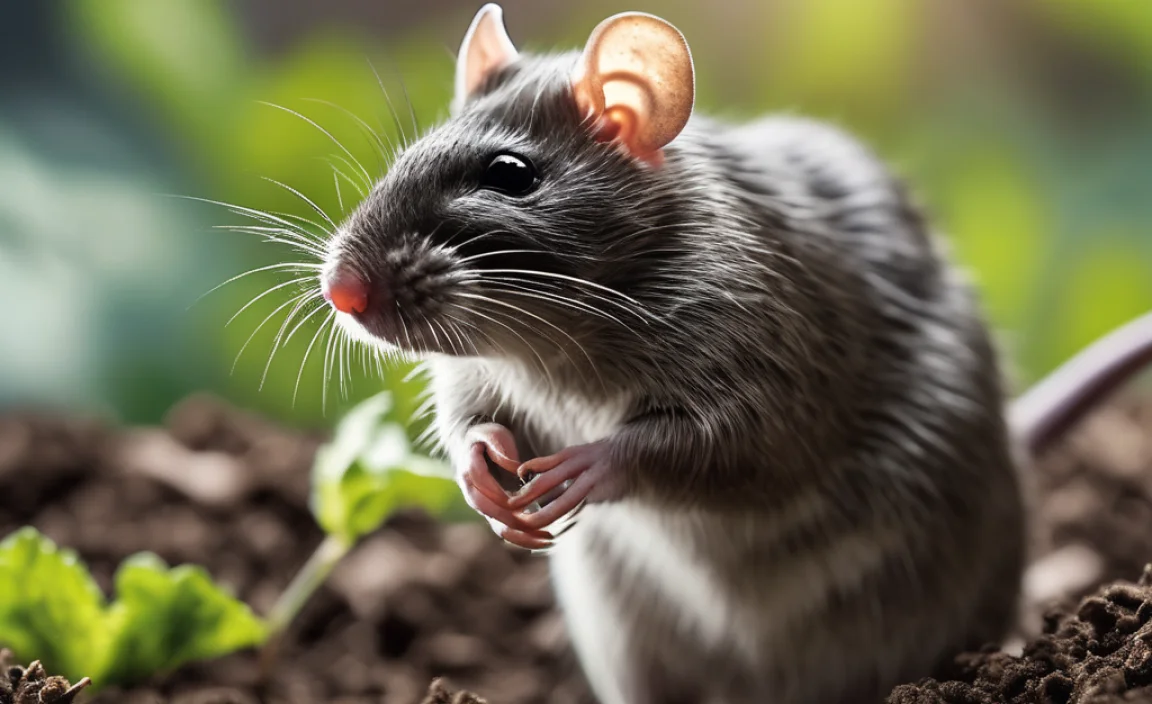
When looking for a new compost bin or planning modifications, understanding what makes a bin “rodent-proof” is key. It’s not about making it impenetrable, but about making it highly difficult and unappealing for rats to access.
| Feature | Why It Works Against Rats | Considerations |
|---|---|---|
| Small Mesh Size (Hardware Cloth) | Rats can squeeze through surprisingly small holes, but ¼ inch or ½ inch mesh is too small for them to gnaw through easily or pass through. | Ensure it’s securely attached and durable. Check periodically for damage. |
| Solid, Heavy Lid | Prevents rats from accessing the compost from above and offers a deterrent against them climbing in. A latch or weight is essential. | Rats are good climbers; a lid alone isn’t enough if sides are accessible. |
| Thick Plastic or Metal Construction | Rats can gnaw through wood and thin materials. Sturdy materials are much harder for them to breach. | Check for cracks or degradation over time. |
| Elevated Design or Solid Base | Prevents burrowing from underneath and makes it harder for rats to access the bin entrance. | Ensure the platform is stable and doesn’t create new hiding spots underneath. |
| Fully Enclosed Design (Tumblers) | Sealed units with minimal openings are the most effective. Tumblers also facilitate faster composting, reducing the time food scraps are exposed. | Can be more expensive. Requires manual “tumbling” which can be a workout! |
Monitoring and Maintenance
Once you’ve implemented your chosen strategies, don’t forget to keep an eye on things. Regular monitoring and maintenance are key to long-term success.
- Regular Inspections: Periodically check your compost bin for any new gnaw marks, droppings, or signs of tampering. Inspect fences or barriers you may have put in place.
- Empty When Full: Don’t let your compost bin overflow. An overstuffed bin can spill its contents, making it an easy buffet for pests.
- Clear Surroundings: Keep the area around the bin tidy. Remove debris, overhanging branches, or anything that could provide cover or access for rats.
- Compost Actively: The faster your compost breaks down, the less time it remains an attractant. Keep turning and managing your compost for optimal decomposition.
Frequently Asked Questions About Compost Soil Rats
Got more questions about compost pests? We’ve got you covered with answers to some common concerns.
Q1: Are compost soil rats dangerous to humans?
While rats themselves might not directly attack humans, they can carry diseases and parasites that can be transmitted to people and pets. Their droppings and urine can also contaminate surfaces and food. It’s best to avoid direct contact and always practice good hygiene when dealing with compost or any signs of rodent activity.
Q2: Can I still compost if I have rats?
Yes, you absolutely can! The key is to make your compost system less attractive and more secure. By using rodent-proof bins, avoiding certain food scraps, and employing proper composting techniques, you can continue to compost successfully while keeping rats at bay.
Q3: What “brown” materials are best for deterring rats?
Dry leaves, shredded cardboard or newspaper, sawdust (from untreated wood), and straw are excellent “brown” materials. They help balance the compost, absorb moisture, and add a layer of bulk that can make it harder for rats to access food scraps buried within.
Q4: How quickly does a well-managed compost pile break down?
With regular turning, proper moisture, and a good green-to-brown ratio, a compost pile can break down compostable material in as little as 4 weeks to a few months, depending on the materials and size. Tumbler composters are often faster. Faster breakdown means less time for pests to exploit your compost.

I am passionate about home engineering. I specialize in designing, installing, and maintaining heating, ventilation, and air conditioning systems. My goal is to help people stay comfortable in their homes all year long.

